Rheumatoid Arthritis: An Algorithm for the Standard of Care.
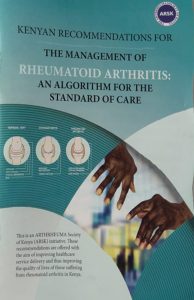
Rheumatoid Arthritis has a lifelong impact on people with the potential of causing severe disability affecting not only the person but also their families and society.
It is a commonest inflammatory joint disease. The treatment has advanced enormously and now much disability is avoidable. But this depends on access to timely appropriate care.
Early diagnosis with the rapid achievement of remission by the initiation of disease suppressing therapy before joint damage has occurred must be the goal. This needs people to present early to someone with the ability to diagnose rheumatoid arthritis. Unfortunately, people often present after having the disease for a while but suppressing the inflammatory process at any stage will lead to better outcomes with less joint damage, less pain, and improved function. It is often not possible to prevent all damage, disability, or pain and rehabilitation is important to help people maximize what they are able to do. People with rheumatoid arthritis must always live with their condition and they also need to know what they can do for themselves to self-manage arthritis and its consequences.
These recommendations give clear guidance as to how good management of rheumatoid arthritis can be achieved. Their implementation will greatly improve the lives of many people suffering from rheumatoid arthritis in Kenya.
Professor Anthony D Woolf
Past Chair Global Alliance for Musculoskeletal Health
Bone and Joint Research Group
Royal Cornwall Hospital, UK
This is an ARTHRHEUMA Society of Kenya (ARSK) initiative. These recommendations are offered with the aim of improving healthcare service delivery and thus improving the quality of lives of those suffering from rheumatoid arthritis in Kenya.
Available in Paperback
Language: English
Paperback: 85 pages
Chat With us Make an Order
BSSA.
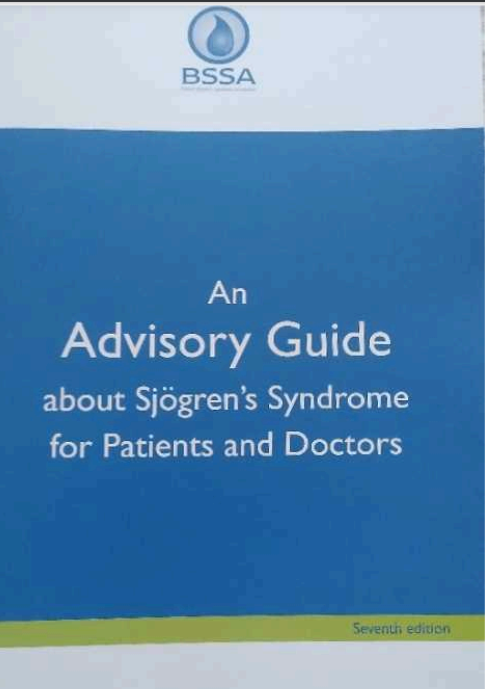
Sjogren's syndrome is an autoimmune Rheumatic disease and can be classified as primary- where it occurs alone - or secondary where it occurs in association with another Rheumatic disease,most commonly rheumatoid arthritis. It causes dryness of the eyes and mouth and is often associated with fatigue and other symptoms such as joint pain.
Primary sjogren's syndrome may affect up to 1% of the population , a similar frequency to Rheumatoid Arthritis yet is relatively under -recognised.secondary sjogren's probably affects 10 to 20% of patients attending rheumatology clinics with longstanding Rheumatoid Arthritis or other Rheumatic diseases . The BSSA are working hard to raise awareness of this condition amongst the general public and health professionals. In the early stages symptoms may be non -specific and its not uncommon for the condition to have been present for up to ten years before the diagnosis is made. At first patients often complain of grittiness rather than dryness of the eyes and the oral symptoms may go unnoticed- it is possible to lose up to 50 % of salivary flow before symptoms become apparent. Up to one third of patients will have problems affecting other body systems- sometimes referred to as systemic disease. This handbook is aimed both at patients and health professionals.
Simon Bowman and Eleanor
Bron both from the British Sjogren's Syndrome Association
It is divided into three sections: the eyes, the mouth and systemic manifestations. We hope that the contents will not only increase awareness of sjogren's sending, leading to more accurate and rapid diagnosis, but also enable the sufferer to manage their condition better thus preventing long term complications.
Chat With Us Make an Order
Lupus - A Guide for Nurses.
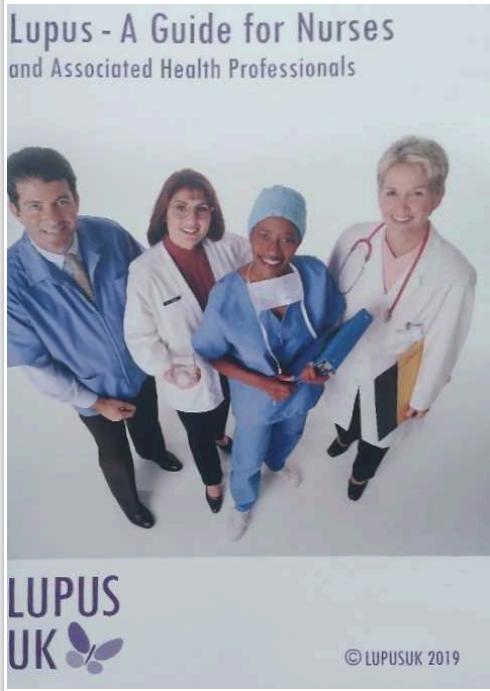
This guide has been prepared to introduce nurses,midwives, and AHPs to systemic lupus erythematos,which is referred to as SLE ,or lupus throughout. It has been a complete privilege and an honor to revise and update this LUPUS UK guide for nurses .It was first written by sister( Sr) Angie Barwick who worked at Louise Coote Unit,St Thomas' Hospital ,London, and who is now retired. I remember devouring the copy I was given when starting as a Lupus Nurse .Sr Sue Brown then edited and updated this in 2011 bringing further insights. Its from standing on the shoulders of these two experts that I hope to bring some refreshment to a text that I hope continues to be useful when working and caring for our patients .
Angie and Sue met in the ĺate 1990s when they set up the LUPUS UK Nurse network ( LUNN) which has been supported by LUPUS UK throughout. This group continues to meet,biannual currently ,and is hosted alternately between central London and Birmingham.Do feel free to get in touch if you also work with a lupus patient ,via LUPUS UK Nation Office .They will happily pass your details along.This network enables nurses to learn from each other and to provide support between meetings. We currently have a mix of speakers, review articles or research of interest ,and time for structured discussion on relevant topics. Previously LUNN has offered a platform for Nurse-led research which was conducted from 2008 -2010 ,which provided information regarding the type of information patients require when newly diagnosed ,and led to the development of a booklet and DVD for those newly diagnosed with lupus.
Patent s with lupus are tenacious and entrepreneurial, courageous and resilient. What diagnosis takes from one hand, they fight back and develop resource- fulness with the other.As I have supported and cared for these people and those that matter to them,I have learnt much more than any text book could teach me.As in the previous editions ,I hope this revised booklet helps you, to guide and manage the lupus patients you work with,pushing boundaries for and with them,while striving for excellence and best practice.
1. Sr Rebecca Gilman RN
BSc PgDip INP, LUPUS Research Clinical nurse specialist and Emeritus
2. Professor Caroline Gordon ,
Rheumatology Research Group ,inflammation and Ageing ,University of Birmingham, Sandwell and West Birmingham Hospitals NHS Trust
In this guide, lupus is discussed as broadly as possible ,from diagnosis to treatment and management plans.Attention has been applied to the pivotal role of the Nurse specialist in supporting the patient throughout their journey, with pragmatic advice about self -management to improve quality of life. This update includes suggestions on individual patient lifestyle choices ( i.e travelling, tattoos and piercing).Although there is no cure for lupus, significant developments continue to occur and have recently resulted in the licensing of targeted therapy for those with moderate to severely active disease, improved treatment and prevention of long term damage.
Chat With Us Make an Order
Vasculitis.
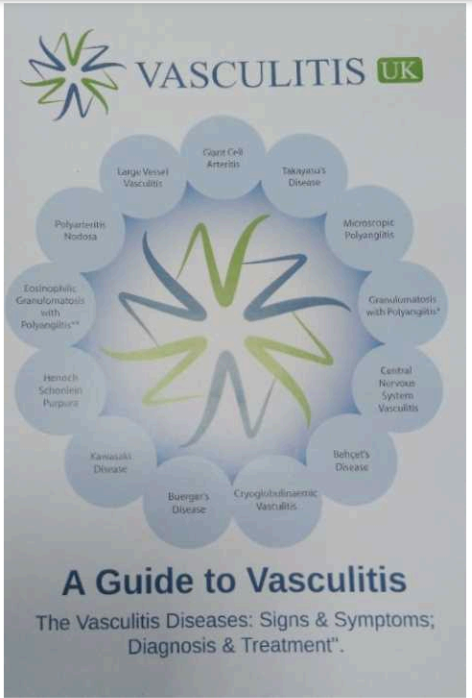
Like many diseases ,early recognition and early diagnosis have a very profound influence on both the short and long term prognosis .Delayed diagnosis may result in permanent serious organ damage.The different types of systemic vasculitis vary from being " uncommon " to extremely rare ,so there is only limited awareness of them .The average GP will only see 2 -3 cases of vasculitis in their whole career. " Vasculitis " simply means inflammation of the blood vessels, which may be due to a variety of causes." Systemic vasculitis " covers a group of 15 quite varied diseases that can affect multiple- organs.Unfortunately most of the signs and symptoms of vasculitis diseases are non - specific ,making them difficult to recognise .There are numerous vasculitis mimics. The current lack of specific reliable tests or " bio- markers " often delays diagnosis .It is usually a matter of " joining up the dots" of tests and symptoms before the vasculitis picture emerges.Many patients are given another diagnosis to explain their symptoms before vasculitis is diagnosed. The average time to correct diagnosis varies from 20 months to more than 3 years. At present these diseases are incurable, but using modern drug therapy they can be controlled and usually brought into remission .A successful outcome also depends on prompt and effective initial treatment, to bring the disease under control, followed by carefully monitored maintenance therapy to keep it under control. Vasculitis varies greatly between individuals, so the experience of the treating clinician can play a key role.
The medical information in this booklet has been provided by ;
1. Professor Lorraine Harper and Dr Matthew Morgan Birmingham University Hospital,
2. Professor Justin Mason Hammersmith Hospital
3. Dr Catherine Guly Bristol Eye Hospital
4. Dr Marcos Martinez Del Perso ,East of England Deanery ,Cambridge.
This booklet is intended as an introductory guide to vasculitis for people diagnosed with vasculitis and their families as well as for medical and healthcare professionals and students who want to learn more about this group of rare auto- immune diseases.
Chat With us Make an Order
Behcets .
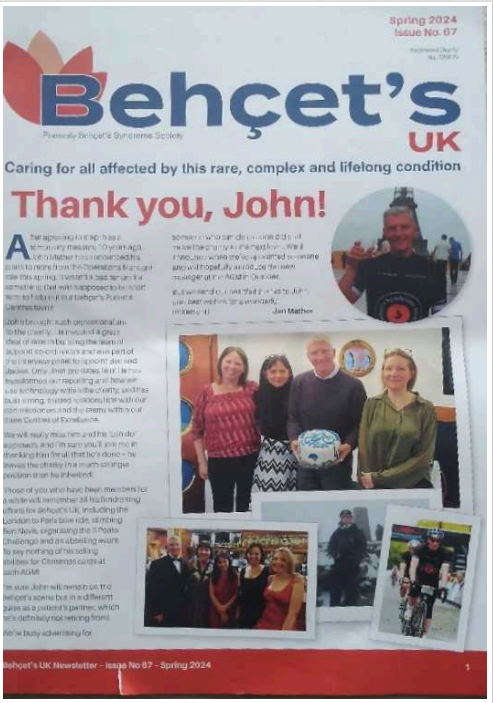
This is an academic newsletter intended for health professionals and affected patients with the intention of creating awareness and understanding of this rare but critical disease. Contact the foundation, grab a copy and let's team up towards better management of behcets disease.
